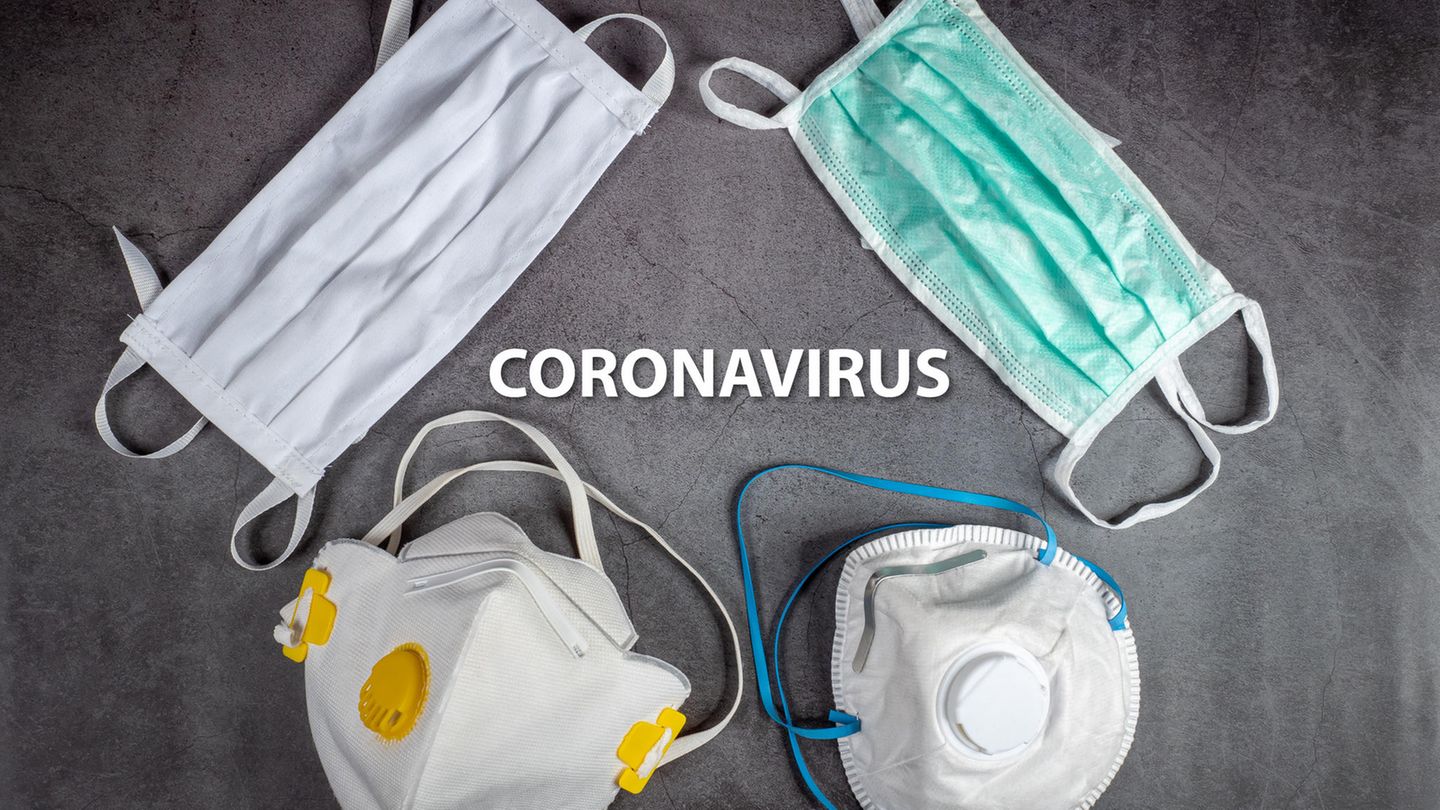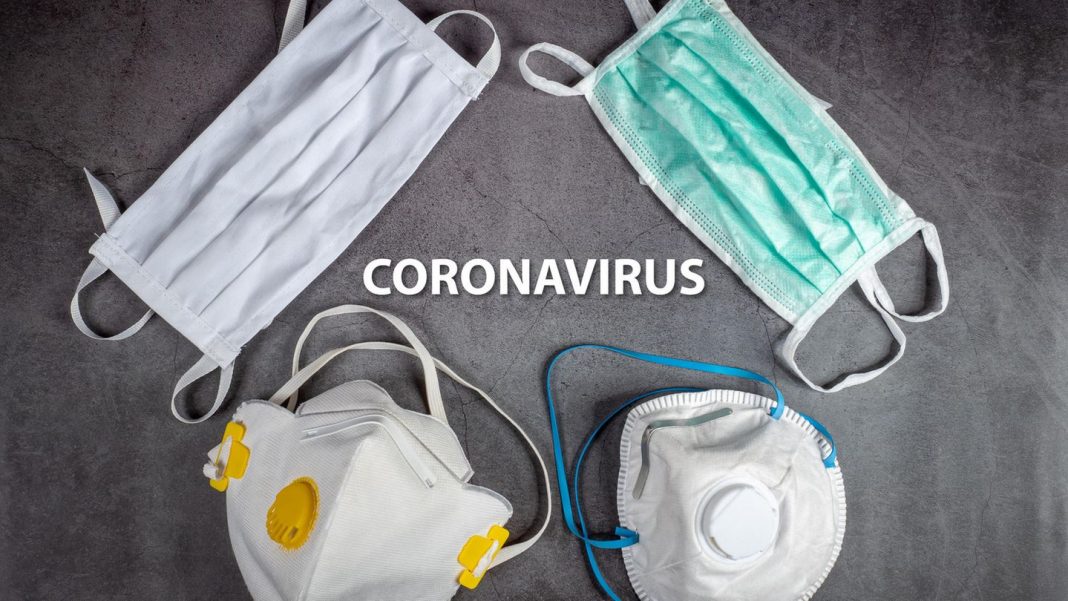Mouth-Nose Protection
Mask comparison: What are the respiratory protective mask is recommended?

The selection of respiratory protection masks is huge, but which one is the best?
© xtrekx / Getty Images
Initially, they were out of stock in many places, now you can get you (almost) anywhere: breathing protection masks are in the fight against the Coronavirus is an important tool. To protect yourself and other people, Wearing is essential. Wherein the masks differ, you can find here.
Basically, no Matter what respirator you are wearing – the most important thing you wear! The offer is now so extensive that you can choose between different models (cloth and disposable masks and medical masks). Here are many however, the question of which variant is the safest for you? In this Video, it is clear how the droplets with and without mouth-nose protection when Talking, coughing and Sneezing spread. And that, in principle, each model can help to reduce the spread of the Coronavirus. Why is this so and what are the respiratory protection mask offers the most protection is explained here.
What are the respiratory protection masks are there?
1. Disposable masks
This is usually three-layer Disposable masks made of polypropylene, which should be disposed of after every use – because viruses could be present on the mask surface. Unfortunately, many people do not mind and use the masks a few times. What is worse, they keep their masks in plastic bags where it is nice and warm and moist. An ideal breeding ground for viruses and bacteria. Also, since the Spray with a disinfectant will not help. Therefore, you should use disposable masks (also for children available) only use once. This is too costly, the following Alternative is a better choice.
2. Reusable Cloth Masks
Unlike disposable masks, respiratory protection masks can be made of fabric re-used. There are models Cotton or Polyesterthat can be cleaned after Wearing in the Laundry washing mine. Recommended to wash at at least 60 degrees, but it is only with respiratory protection masks made of cotton possible. By boiling with hot water, however, the virus can get over the water vapor in the air, before they become inactive. The Same applies to cleaning the oven or with an iron. When you are buying a cotton mask (also for children available) to the fact that this is always in two layers.
3. Medical Face Masks
Actually, this three-layer masks can be used exclusively in the medical field to protect patients from possible droplet infection. Currently, the certified mouth-nose protection however, due to the prevailing Corona-crisis, for private use offered. For a short period of time the respiratory protection masks protect the wearer, however, in the first place – as in the case of the disposable all purpose masks, and reusable fabric masks also – to avoid, to infect others. For the self-protection the following models with FFP2 or FFP3 filters are the most suitable.
4. Respiratory protection masks with FFP-Filter
These half masks are close to the mouth and nose, so that the carrier is significantly better protected against the Transmission of viruses. This is made possible by the built-FFP-Filter (Filtering Face Piece), the smallest particles and aerosols intercept. We distinguish between three levels of protection: FFP1, FFP2 and FFP3 – the Robert Koch Institute in the fight against Corona, the Wearing of a minimum of FFP2 recommends. In order to ensure that the particle-filtering half-masks in Europe are allowed, you must pay attention to the so-called CE-mark. “The masks have to fulfill the regular requirements of the standard DIN EN 149:2009-08,” explains the Federal Institute for drugs and medical devices (BfArM).
It also FFP2 models with an extra valve, however, these only filter the inhaled air and protect only the carrier, but not the environment. The exhaled air is released unfiltered to the outside, so that the carrier can be infected in case of an infection to other people well. Therefore, the US health authority CDC advises against the use even of respiratory protection masks with valves or vents to wear in everyday life.
Tip:
Even more different models, with different filter options you will find on this Mask-Shop.
Caution danger of Contagion, to Whom the masks protect?
It is out of the question, why experts recommend Wearing a respiratory protection mask continues to be The Coronavirus spreads rapidly and can only be achieved by compliance with all hygiene rules contained. Nevertheless, more and more people to weigh in on, and to be sloppy, wear your masks below the nose (not without reason the mouth-nose protection), or omit entirely. The epidemic is not survived for a long time, we should, therefore, the General recommendation to continue to wear respiratory protection masks, to protect us and our fellow human beings, Seriously. Since the first three models, however, have no FFP Filter, it can only help that they want to pass anyone – you don’t protect the wearer himself from infection.
|
Type |
Protects the wearer |
Protects the environment |
|
Disposable masks |
No |
Yes |
|
Fabric masks |
No |
Yes |
|
Medical Masks |
No |
Yes |
|
Masks with FFP-Filter |
Yes |
Yes |
You might also be interested in:
This article contains the so-called Affiliate Links. There is more information here.


